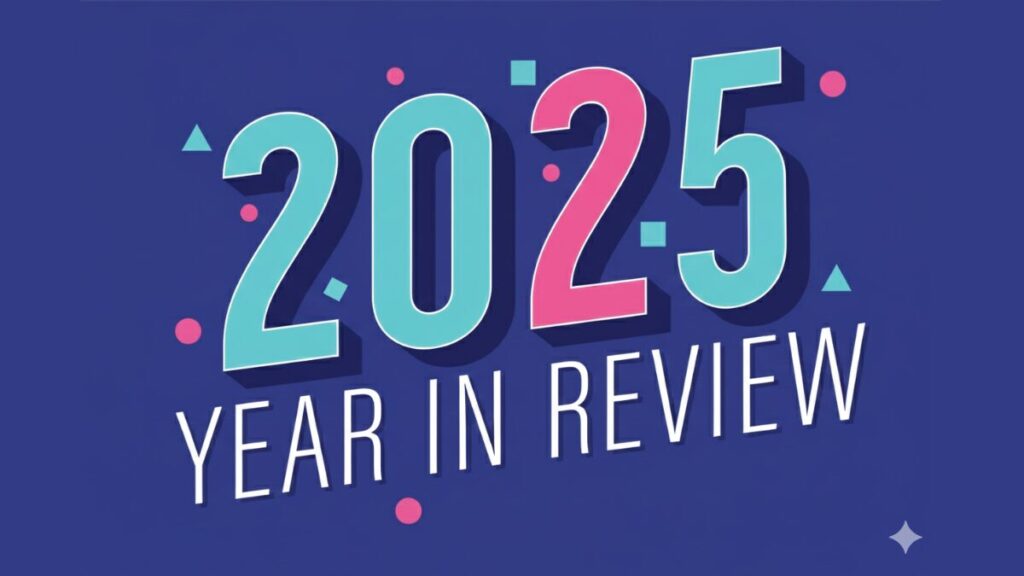What can you do with RCS?

Imagine sending a marketing message that’s as interactive and visually appealing as a chat with a friend, but built for business impact. What if you could send boarding passes, product carousels, and appointment reminders directly into your customers’ native messaging apps, complete with your branding? That’s precisely what Rich Communication Services (RCS) messaging offers.
RCS combines the reach of texting with the rich features of modern chat applications. Let’s take a closer look at what RCS is and how you can use it effectively.
What is RCS messaging?
RCS allows you to send messages that go beyond plain text. It operates over data networks (Wi-Fi or mobile data) and allows for significantly richer communication experiences directly within the phone’s default messaging app.
With RCS, you can share:
- High-resolution images and videos
- Engaging animated GIFs and audio clips
- Interactive carousels
- Suggested replies and action buttons (e.g., “Add to Calendar,” “View Order,” “Call Support”)
- Location sharing and map integration
- File transfers
This technology makes business communication more dynamic, useful, and efficient. RCS also incorporates features like Verified Sender profiles (so customers know it’s really you) and supports end-to-end encryption for enhanced security, building trust while delivering a superior customer experience.
How RCS messaging works
RCS functions through the native messaging app built into smartphones, provided both the sender and receiver have RCS capabilities enabled on their devices and networks. This is a key advantage – no extra app download is needed for the end user.
RCS relies on the GSMA’s Universal Profile standard to make sure it can seamlessly operate across devices and systems that support this feature. Google has been a major driver of RCS adoption through its Google Messages app on Android devices.
Apple plans to support RCS on iPhones and this will expand its reach. Communication happens over an IP (Internet Protocol) connection, using mobile data or Wi-Fi, similar to OTT (Over-The-Top) Messaging Apps.
RCS, SMS, MMS, and OTT differences
Messaging has evolved significantly, and understanding the differences between RCS, SMS, MMS, and WhatsApp is important for navigating modern communication. Each platform offers unique features and capabilities, catering to different needs.
SMS (Short Message Service)
SMS marketing is a form of marketing that businesses use to send promotions to customers via text messages. SMS is limited to 160 characters of plain text and relies on cellular networks.
MMS (Multimedia Messaging Service)
MMS is an extension of SMS by adding the ability to send multimedia content like images, audio, and short videos. MMS also relies on cellular networks and has limitations in file size and quality.
OTT (Over-The-Top) Messaging Apps (e.g., WhatsApp, Facebook Messenger):
These apps run “over the top” of mobile networks, using data/Wi-Fi. They offer rich features like multimedia messaging, voice and video calls, group chats, and end-to-end encryption.
RCS (Rich Communication Services)
RCS aims to combine the reach and native integration of SMS/MMS with the rich features of OTT apps. It uses mobile data and Wi-Fi, and supports high-quality media, interactive elements, branding, read receipts, typing indicators, and security features, all within the user’s default messaging app.
Key features of RCS messaging
Let’s have a look at the key features you can expect while using RCS messaging.
Multimedia messaging capabilities
With RCS, you can say goodbye to plain text and hello to rich, engaging conversations. Send a carousel of stunning product photos customers can swipe through, deliver a short video tutorial solving a common issue, or share an eye-catching GIF promoting a flash sale.
These capabilities allow you to communicate more effectively, making complex information easier to understand and marketing messages far more memorable and impactful.
What’s even better? Your customers don’t need to download any extra apps. Everything happens right in their default messaging app. This seamless experience keeps your audience engaged and makes it easier for them to interact with your brand.
Read receipts and typing indicators
Ever wondered if your message was read or if someone is typing a reply? RCS has you covered. Features, like read receipts and typing indicators, give you real-time insights into your conversations.
Read receipts show you when your message has actually been seen by the recipient. This provides valuable insight, letting you know your communication has landed and been viewed.
The subtle typing animation of “…” signals that the other party is actively composing a reply. This small cue is powerful – it reassures customers that their message is being addressed (especially in support scenarios) and encourages them to stay engaged in the live conversation.
These tools make communication more efficient. They help you time your replies better and create a more interactive experience. For example, if a customer sees that you’re typing, they’re more likely to stay engaged in the conversation. This immediacy creates a sense of connection and keeps the dialogue flowing.
Verified Sender Profiles and branding
No one likes an unsolicited message arriving on their phone, It’s really important to build and maintain trust with the people you’re reaching out to. RCS messaging directly addresses this by replacing anonymous phone numbers with Verified Sender Profiles. This feature is key to communicating honestly and effectively with your customers.
Instead of your customers seeing just a string of digits, RCS allows you to display:
- Your official brand name
- Your company logo
- A verification mark (confirming your identity has been authenticated)
This information appears prominently within the chat interface, often at the top of the conversation thread. The impact is immediate: customers instantly recognize who is messaging them, significantly reducing suspicion and increasing the likelihood they’ll engage with your message.
Why Verified Profiles are important
- Combats fraud and spam: Verification serves as your first line of defense against phishing attempts and unwanted impersonators trying to pose as your brand. When customers see that you’re verified, they can engage with confidence, knowing the message is genuinely from you.
- Boosts credibility and confidence: When customers spot a verified logo and your brand name, it creates a sense of professionalism and trust. They feel reassured that they’re dealing with a legitimate business, which ultimately makes them feel safer in their interactions.
- Enhances brand recognition: By consistently showcasing your logo and brand name, you reinforce your identity right in the heart of communication. This keeps your brand fresh in customers’ minds, ensuring they remember who you are.
- Improves deliverability: Having a verified status signals to carriers and messaging apps—and more importantly, to users—that your messages are trustworthy. This significantly lowers the risk of your messages being mistakenly flagged as spam, making sure your messages reach the right audience.
Think of it as adding a layer of digital authenticity to your messages. By using verified profiles and consistent branding within RCS, you don’t just send messages; you build trust and create a more secure, professional communication channel from the first interaction.
Interactive elements and smart replies
RCS messaging takes customer interaction to a whole new level with its interactive elements and smart replies. These features make conversations smoother and more engaging for your audience. Instead of just reading a message, your customers can actively participate in the conversation.
For example, RCS messages can include interactive buttons and smart replies (often called suggested replies or chips). These allow users to take actions like answering surveys, navigating to a webpage, or even making a purchase—all without leaving the chat.
With RCS, you can embed clear calls-to-action like:
- “View Product Catalog”
- “Track My Order”
- “Add to Calendar”
- “Confirm Appointment”
- “Connect to Support Agent”
- “Complete Survey”
These buttons make it incredibly simple and fast for users to accomplish tasks, browse options, or get the information they need directly within the messaging interface. This significantly reduces friction and keeps customers engaged in the journey you’ve designed.
Complementing action buttons, smart replies provide pre-set response options tailored to your message. If you ask, “Would you like to reschedule your delivery for tomorrow?” the customer might see suggested reply bubbles like:
- “Yes, please”
- “No, keep the original date”
- “Choose another day”
Ultimately, these interactive features shift RCS from a simple notification channel to a dynamic platform for creating meaningful, action-oriented conversations that resonate with customers and drive results.
Group messaging and collaboration
RCS messaging isn’t just for one-on-one chats. It also supports group messaging, making it a powerful tool for collaboration. Whether you’re coordinating with a team or engaging multiple customers at once, RCS makes group communication easy and efficient.
With group messaging, you can share updates, files, and multimedia content with everyone in the group. Need to send a product demo video to a group of clients? You can do that directly within the chat. Everyone stays on the same page without switching between apps.
Typing indicators and reading receipts add another layer of convenience. You’ll know who has seen your message and who’s typing a reply. This transparency helps keep the conversation flowing smoothly. Plus, the ability to include interactive elements in group chats means you can gather feedback or schedule meetings with just a few clicks.
Advantages of RCS for modern communication
RCS isn’t just an upgrade—it’s a game-changer for your brand. Here’s why:
Enhanced user engagement
RCS messaging lets you create visually stunning and interactive campaigns that grab attention. Instead of sending plain text, you can use rich media like images, videos, and GIFs to make your messages pop. Imagine showcasing your latest product line with a vibrant carousel or sharing a quick how-to video that answers customer questions instantly. These features make your communication not just informative but also memorable.
With features like buttons and quick replies, users can take action right in the chat, making it easier and faster for them to respond. This kind of interaction keeps users interested and involved, building a stronger connection with the brand.
Improved brand trust and credibility
RCS lets you show your company name, pick colors for chats, and display your logo, much like users can show profile pictures. These small features help users feel secure and build trust.
When a brand has a verified profile with its logo and name, it looks more legitimate. This helps stop messages from being marked as spam and boosts customer confidence. Keeping a consistent brand image across messaging channels helps people recognize the brand and look professional.
Seamless and intuitive user experience
RCS works directly in your regular messaging app, so you don’t have to download anything new. This makes it easy for everyone to use. Features like read receipts and typing indicators give you real-time updates, making conversations feel more engaging.
Website previews let you see what a link is about before you click on it, which helps you stay safe and makes using links easier. This feature is important for feeling secure about the links shared in conversations.
Empowering customers with full features in one place
RCS keeps customers engaged by offering a variety of features in one convenient platform. Users can send boarding passes, accept payments, view interactive maps, and display product carousels, all within RCS. This integration allows users to access everything they need without having to switch between different apps or platforms.
Creating memorable conversations
RCS changes every message into a chance for a conversation. This means you can respond faster, engage better, and provide a smoother experience for customers. Whether it’s sending a PDF receipt, giving live updates, or sharing marketing messages, RCS lets your customers talk to you like they would with friends or family. This makes customers more open to brands and their messages.
Increased efficiency and productivity
Interactive buttons and smart replies simplify customer interactions, allowing users to complete tasks quickly and efficiently. Group messaging capabilities facilitate seamless collaboration, enabling teams to share information and coordinate efforts in real-time. Chatbots powered by RCS provide instant support and automate routine tasks, freeing up valuable time and resources.
Enhanced security
RCS provides end-to-end encryption, ensuring that sensitive information remains secure during transmission. Verified sender profiles add an additional layer of security, protecting users from phishing attempts and fraudulent messages. The platform also offers enhanced verification services, including two-factor authentication, which allows users to copy and paste one-time passwords directly. This feature improves convenience for consumers without compromising security.
Efficient check-ins
RCS makes it easy to connect with Google Wallet, allowing users to manage check-ins for events like flights or tickets without hassle. You can send interactive messages through RCS that include boarding passes or event tickets. With just a button, users can add these passes directly to their Google Wallet.
This takes away the need for awkward downloads or switching between apps, making check-ins simple and convenient. For instance, an airline can send a message with a boarding pass, and the customer can add it to their Google Wallet with one tap, making traveling easier.
Getting started with RCS messaging
Are you ready to use RCS? Here’s a practical roadmap:
Verify your brand
Establishing a verified sender profile is important for building trust with your customers when implementing RCS messaging. Your brand name, logo, and contact information will be displayed, ensuring recipients know they’re communicating with a legitimate business. This verification process not only enhances customer trust but also helps combat fraud and ensure the authenticity of businesses.
Create engaging content
To create engaging content, plan and design your RCS messages to take advantage of the platform’s rich features. Use high-quality visuals, interactive buttons, and quick replies to create captivating and informative content.
Consider incorporating storytelling elements and user-generated content to make your messages more relatable and interesting. Additionally, implementing Google Wallet integration can improve the customer experience by enabling seamless transactions within the messaging interface.
Integrate with your systems
Integrating RCS messaging with your existing systems is essential for maximizing its potential. Use API integration to connect RCS messaging with your CRM, marketing automation, and other business systems. This integration allows for automated messaging and personalized customer interactions, enabling you to send tailored content based on customer preferences and past interactions.
Monitor and analyze
Monitoring and analyzing the performance of your RCS campaigns is essential for understanding what appeals to your audience. Track metrics such as open rates, click-through rates, and conversion rates to optimize your messaging strategy. Use this data to refine your approach and make informed decisions that enhance the effectiveness of your campaigns.
Test your campaign
Before fully launching any RCS campaign, it’s best to test the messages on a small group of users. This allows you to identify any errors and make necessary improvements before sending the messages to your entire customer base.
With A/B testing, you can compare different approaches and identify which resonates best with your audience. By iterating and refining your RCS messaging strategy based on these insights, you can create more impactful and engaging communications with your customers.
Add RCS to your mobile messaging strategy today
RCS messaging offers a dynamic, engaging, and secure evolution for business communication. With its rich media, interactive elements, verified sender profiles, and enhanced security, RCS transforms simple notifications into genuine conversations within the messaging apps your customers already use daily.
By delivering branded, interactive, and trusted experiences, RCS helps you build stronger customer relationships, improve operational efficiency, and unlock new opportunities. Don’t let your communication strategy lag behind. Embrace the future of messaging and start creating more meaningful, memorable conversations with RCS today.



